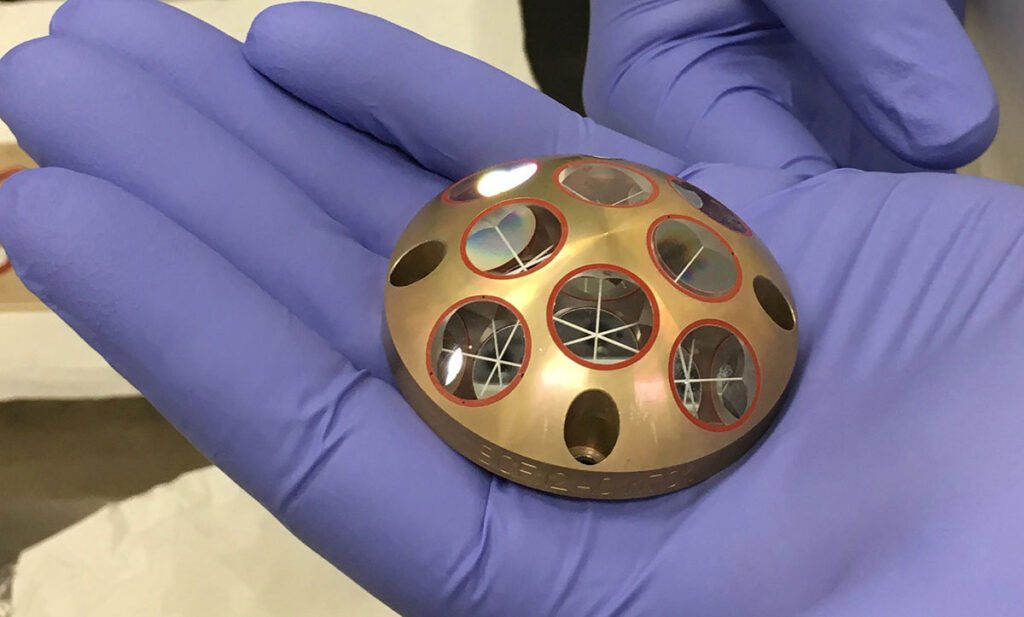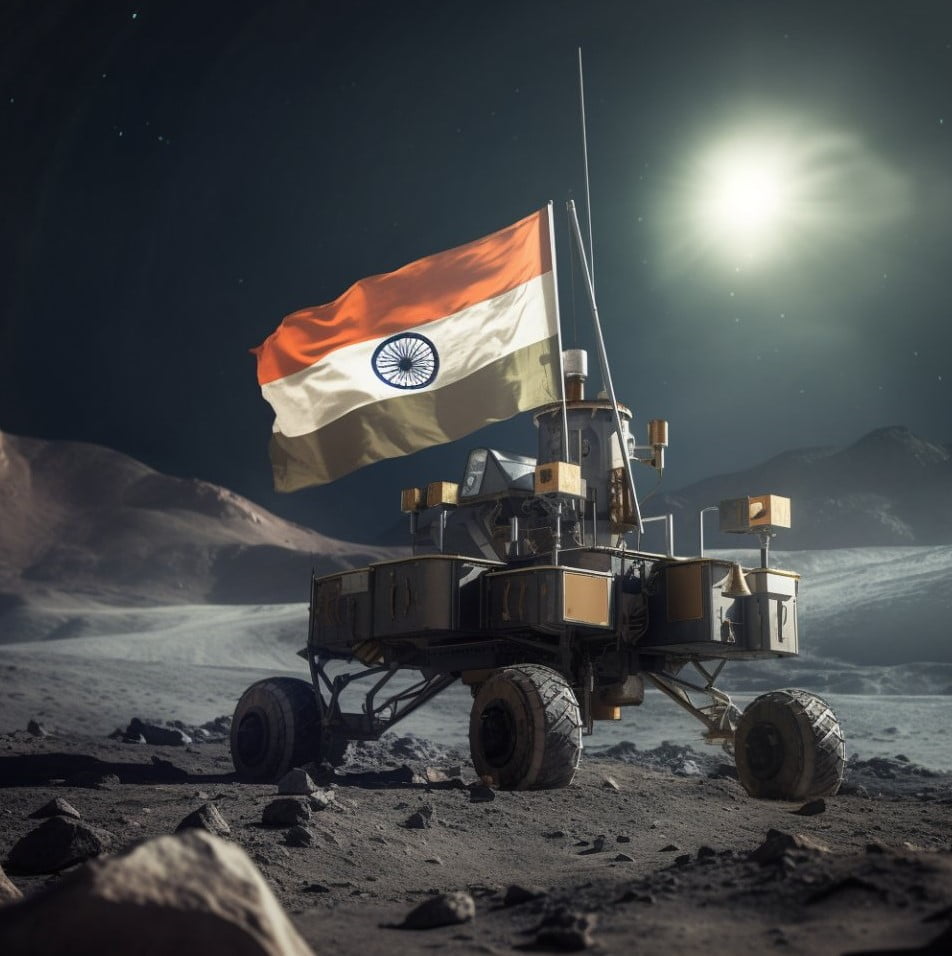NASA’s Spacecraft LRO ( Lunar Reconnaissance Orbiter ) transmitted a laser beam message to Chandrayaan-3 Lander Vikram and the laser message reflected to the LRO. For the very first time, scientists conducted a groundbreaking experiment on the Moon. This success now leads the path to a fresh approach to precisely locating targets on the lunar surface. On December 12, 2023, at 3 p.m. EST, NASA’s Lunar Reconnaissance Orbiter (LRO) directed its laser altimeter instrument towards Vikram.
Laser Beam Message to Chandrayaan-3 Lander Vikram By LRO

NASA’s Lunar Reconnaissance Orbiter (LRO) aimed its laser altimeter tool at Vikram’s retroreflector – an Oreo-sized payload of NASA on Vikram lander. Lander Vikram was 62 miles (100 kilometers)away from LRO when the orbiter sent laser pulses in its direction. The pivotal moment arrived when the Lunar Reconnaissance orbiter detected reflected light from the m NASA’s retroreflector on Vikram. scientists at NASA confirmed the success of their groundbreaking technique.
According to some news, this is only the 6th successful laser retroreflector on the moon.
(1) Appollo 11 (NASA) – LRRR (NASA)
(2) Luna 17 (USSR) – French LRA
(3) Apollo 14 (NASA)- LRRR (NASA)
(4) Apollo 15 (NASA)- LRRR (NASA)
(5) Luna 21 (USSR)- French LRA
(6) LRA (NASA)- Chandrayaan-3 (India)
Laser beam message to Chandrayaan-3 Lander Vikram by LRO is the most successful experiment on the surface of the moon. This experiment will further continue in the future with some other landers.
NASA’s gadget on the Chandrayaan-3 lander “Vikram” is quite small, only 2 inches or 5 centimeters wide. It’s called a Laser Retroreflector Array and has eight quartz-corner-cube prisms arranged in a dome-shaped aluminum frame. It needs neither power nor maintenance, with a potential lifespan of decades. Its design lets the retroreflector bounce back light from any direction to where it originated. A laser beam message to Chandrayaan-3 Lander Vikram by Lunar Reconnaissance Orbiter.
The Lunar Reconnaissance Orbiter (LRO), launched on June 18, 2009, is an orbiter designed for exploration and scientific purposes. One of its notable achievements is the creation of a detailed 3D map of the Moon. This mapping initiative is a crucial component of a broader program aiming to pinpoint potential landing sites and identify resources on the lunar surface. Notably, LRO’s efforts include the identification of water ice deposits hidden in the shadowed regions of polar craters. The “Laser Beam Message to Chandrayaan-3 Lander Vikram By LRO” article is based on the Article of NASA.
Read also ISRO Set for February Launch of Crucial INSAT-3DS Satellite by GSLV-F14


